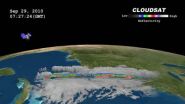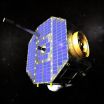(Press-News.org) Troy, N.Y. – The National Lighting Product Information Program (NLPIP) released its latest Specifier Report, designed to provide objective performance information on existing street lighting technologies -- including light-emitting diode (LED), induction, and high pressure sodium (HPS) streetlights. This report comes at a critical time when many municipalities, some with funding from the American Recovery and Reinvestment Act of 2009, are in the process of replacing HPS streetlights with LED and induction models.
NLPIP, established by Rensselaer Polytechnic Institute's Lighting Research Center (LRC) in 1990, helps lighting professionals, contractors, designers, building managers, and other consumers find and effectively use efficient, quality products that meet their lighting needs.
NLPIP performed photomet¬ric evaluations of 14 streetlights that used either HPS, pulse-start metal halide (PSMH), or induction lamps, or LED modules. NLPIP analyzed the streetlights for light output and distribution, energy use, spectral effects on visual performance, discomfort glare, and economic factors. The streetlights were evaluated as part of installations that meet the lighting criteria as defined in the American National Standard Practice for Roadway Lighting, ANSI/ IESNA RP-8-00 (R2005), for a simulated one-mile stretch of collector roadway (a road servicing traffic between local and major roadways).
According to NLPIP, when replacing the pole-mounted HPS streetlights on a one-mile section of collector road with the LED or induction streetlights used in the study, it would take twice as many of the pole-mounted LED or induction streetlights to meet the lighting criteria as defined in RP-8-00.
Complete performance results are published in Specifier Reports: Streetlights for Collector Roads, which is available online at www.lrc.rpi.edu/nlpip/publicationDetails.asp?id=927&type=1.
"The LED and induction streetlights we tested required narrower pole spacing. As a result, the life cycle cost per mile was dominated by the installation cost of the poles, as opposed to the initial cost of the streetlights or any potential energy or maintenance cost savings, as one may assume," said Leora Radetsky, LRC lead research specialist, principal investigator and author of the report.
LED and induction technologies are often marketed as money saving alternatives to HPS, with some manufacturers claiming reductions in energy and main¬tenance costs. However, NLPIP found that the HPS and PSMH streetlights evaluated in this test provided a better cost value than the LED and induction streetlights evaluated, which would need to produce about the same street-side lumens as the HPS models to be economically competitive.
The average power demand of the LED streetlight layouts evaluated was slightly lower than the average power demand of the HPS streetlight layouts, but there was wide variation among LED models, according to NLPIP.
Mesopic Vision
The human visual system uses two types of photoreceptors, cones and rods, found in the retina. Cones are used to process visual information under daytime or "photopic" light levels, while rods work under completely dark "scotopic" conditions. There is, however, a range of light levels called "mesopic," where both cones and rods together provide input to the visual system. Mesopic light levels are typically found outdoors at night. However, commercial photometry is based entirely upon the photopic luminous efficiency function, which considers how the eye "sees" during daylight hours. As a result, conventional photometry may misestimate the effectiveness of some light sources used in nighttime applications in terms of energy efficiency and visual performance.
NLPIP notes that, at the illuminance levels typical of collector roadways, "white light" sources such as LED streetlights could be slightly dimmed and provide equal levels of visual performance, based on mesopic photometry. However, in the collector roadway scenario used in this study, the reduced power requirement would have little impact on the life cycle cost per mile described above.
###
The Specifier Reports series is designed to provide brand name performance information for efficient lighting products and systems. All Specifier Reports can be found at www.lrc.rpi.edu/programs/NLPIP/publications.asp.
About the National Lighting Product Information Program (NLPIP)
NLPIP, established by the Lighting Research Center (LRC) in 1990, helps lighting professionals, contractors, designers, building managers, homeowners, and other consumers find and effectively use efficient, quality products that meet their lighting needs. With the support of government agencies, public benefit organizations, and electric utilities, NLPIP disseminates objective, accurate, timely, manufacturer-specific information about energy-efficient lighting products in its series of Lighting Answers, Lighting Diagnostics, Specifier Reports, and Technical Guides. NLPIP sponsors include Centre for Energy Advancement through Technological Innovation (CEATI International Inc.), the New York State Energy Research and Development Authority (NYSERDA), and the United States Environmental Protection Agency (US EPA). Learn more at www.lrc.rpi.edu/programs/NLPIP/index.asp.
About the Lighting Research Center
The Lighting Research Center (LRC) is part of Rensselaer Polytechnic Institute of Troy, N.Y., and is the leading university-based research center devoted to lighting. The LRC offers the world's premier graduate education in lighting, including one- and two-year master's programs and a Ph.D. program. Since 1988 the LRC has built an international reputation as a reliable source for objective information about lighting technologies, applications, and products. The LRC also provides training programs for government agencies, utilities, contractors, lighting designers, and other lighting professionals. Visit www.lrc.rpi.edu.
END
A team of astronomers that includes the University of Hawaiʻi' at Manoa's Nader Haghighipour has announced the discovery of a planet that could have liquid water on its surface.
The planet, which is probably 30 percent larger than Earth, was discovered using one of the telescopes of the W. M. Keck Observatory on Mauna Kea. It orbits a relatively small star, Gliese 581, that is 20 light-years from Earth in the constellation Libra.
"By determining the orbit of this planet, we can deduce that its surface temperature is similar to that of Earth," said Haghighipour. ...
For the first time, scientists are using advanced technology and an innovative vessel to study, image, and map the unexplored offshore Northern San Andreas Fault from north of San Francisco to its termination at the junction of three tectonic plates off Mendocino, Calif.
The team includes scientists from NOAA's National Marine Fisheries Service, Oregon State University, the California Seafloor Mapping Program, the U.S. Geological Survey and Woods Hole Oceanographic Institution. The expedition which concludes Sunday is sponsored by NOAA's Office of Ocean Exploration and ...
TORONTO, Sept. 30, 2010 – A waterproof controller designed and built by York University researchers is allowing an underwater robot to go "wireless" in a unique way.
AQUA, an amphibious, otter-like robot, is small and nimble, with flippers rather than propellers, designed for intricate data collection from shipwrecks and reefs.
The robot, a joint project of York, McGill and Dalhousie universities, can now be controlled wirelessly using a waterproof tablet built at York. While underwater, divers can program the tablet to display tags onscreen, similar to barcodes read ...
NANO -- World's smallest antenna . . .
Instead of the conventional long piece of metal or dipole antenna, electronic devices of tomorrow could incorporate an antenna no bigger than a gnat. This is made possible by a design that allows an electrically charged nano-mechanical oscillator to be tuned to specific electromagnetic waves. "Gone will be the days when we need to match the antenna length to the wavelength," said Panos Datskos, a co-developer of this proprietary technology. The potentially revolutionary system detects very small electric fields over large frequency ...
High in an alpine meadow, Gesine Pufal, from the University of Wellington, New Zealand, crouched low to the ground and splashed some water from her water bottle on a low green plant cushion, then sat back waiting to see if something would move. Sound crazy? Many hikers passing by her may have thought so, but Pufal was trying to find potential plant species that possess a type of plant movement called hygrochasy.
Although the ability to move is typically thought to be a characteristic unique to the animal kingdom, plants are also capable of movement, from the sudden ...
Tropical Storm Nicole was a tropical storm for around 6 hours before it weakened into a remnant low pressure area and is now off the Florida coast. NASA Satellite imagery captured different views of Nicole's clouds as the system weakened back into a low pressure area.
While Nicole weakened, a huge trough of low pressure over the U.S. eastern seaboard from Florida to Maine has become the key weathermaker there. The trough, an elongated area of low pressure, is streaming tropical moisture from Nicole's remnants and the Gulf of Mexico, bringing high rainfall totals and severe ...
A new study, derived from novel sleep research conducted by University of California, San Diego researchers 14 years earlier, suggests that the secret to a long life may come with just enough sleep. Less than five hours a night is probably not enough; eight hours is probably too much.
A team of scientists, headed by Daniel F. Kripke, MD, professor emeritus of psychiatry at UC San Diego School of Medicine, revisited original research conducted between 1995 and 1999. In that earlier study, part of the Women's Health Initiative, Kripke and colleagues had monitored 459 women ...
When NASA launched the Interstellar Boundary Explorer (IBEX) on October 19, 2008, space physicists held their collective breath for never-before-seen views of a collision zone far beyond the planets, roughly 10 billion miles away. That's where the solar wind, an outward rush of charged particles and magnetic fields continuously spewed by the Sun, runs into the flow of particles and fields that permeates interstellar space in our neighborhood of the Milky Way galaxy.
No spacecraft had ever imaged the collision zone, which occurs in a region known as the heliosheath, because ...
VIDEO:
See a time-lapse series showing hyper-replication of Salmonella bacteria (red) in epithelial cells from two to seven hours after infection.
Click here for more information.
New findings by National Institutes of Health scientists could explain how Salmonella bacteria, a common cause of food poisoning, efficiently spread in people. In a study published this week in the Proceedings of the National Academy of Sciences, researchers describe finding a reservoir of rapidly ...
A cheetah lies still in the grass. Finally, a gazelle comes into view. The cheetah plunges forward, reaches sixty-five miles per hour in three seconds, and has the hapless gazelle by the jugular in less than a minute. Then it must catch its breath, resting before eating.
A blue whale surfaces, blasting water high from its blowhole. It breathes in great gasps, filling its thousand-gallon lungs with air. Then it descends again to look for krill, staying below for 10, 20, even 30 minutes before taking another breath.
Both animals need oxygen, of course. And both depend ...


